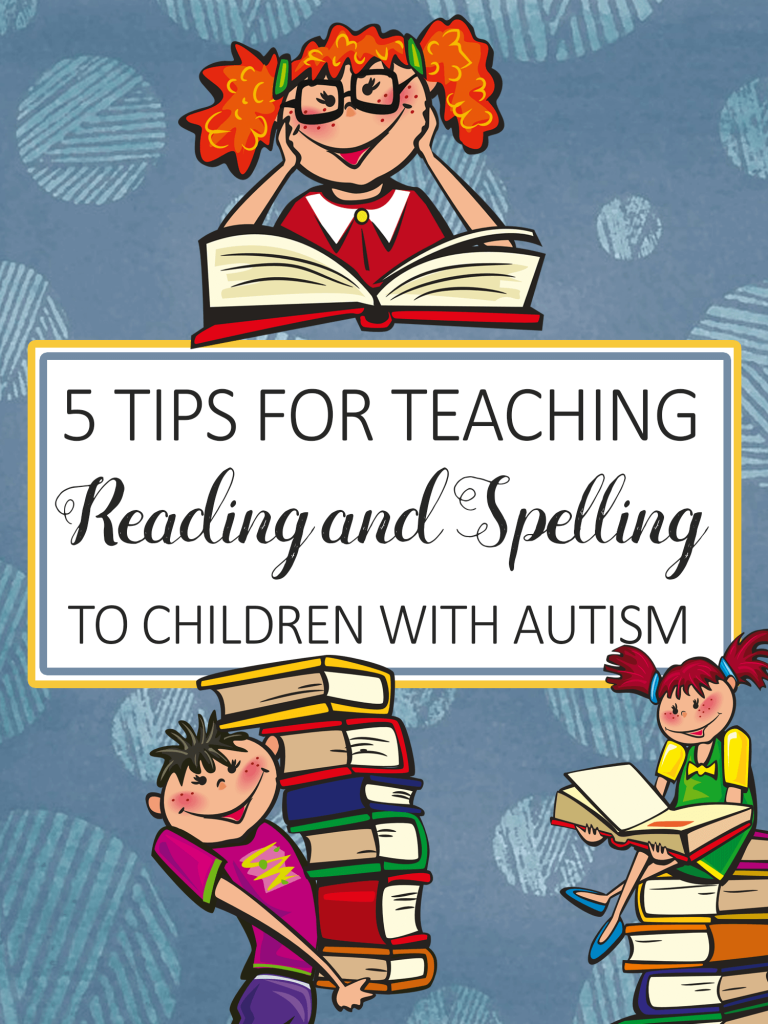5 Tips for Teaching Reading and Spelling to Children with Autism
Were you ever in the spelling bee in elementary school? I remember one time back in early elementary when I was and some of those words I had to study seemed insane… I could not fathom how I would ever remember how to spell “handkerchief” since it had a silent letter in it. And I really hated those words that had double letters but you could never remember which letters and how many were doubled, like in “accommodate.” Of course, I have since learned how to spell most of the words that used to seem so daunting. But, somebody had to teach me. As if teaching and learning, as well as reading and spelling, are not hard enough, additional challenges are presented when teaching it to children who have autism.
What difficulties does autism present?
Autism can present a broad range of challenges in a child’s life, but especially when it comes to learning new things. Though it might not always affect the child’s ability to learn, it does often affect how they learn new things. Children with autism simply don’t process things the way a child without autism does. Their brains are wired differently. For example, children with autism are very visual thinkers, rather than thinking of things in their head using words, they often use pictures, sounds, and touch.
In addition to not connecting well with words, autistic children also face the difficulty of getting sequences to stick in their head. For example, they have trouble remembering a long string of words or a set of numbers. All of these traits combined can make learning to spell difficult for a child. They have trouble remembering a sequence of letters and they just simply don’t see and remember words the way a child without autism does.
Now, as far as reading goes, a child with autism also is unable to differentiate between certain sounds, which can make learning to read incredibly difficult. While you might be reading this, and thinking to yourself, how will I ever teach my autistic child how to read and spell then? Is it impossible? It is not impossible. All it takes are the right tools and a set of tips:
5 Teaching Tips for Children with Autism
With teaching methods designed for children with autism, your autistic child will be reading and spelling just like their fellow classmates:
1. Keep lessons incremental
Like we mentioned, autistic children are unable to remember a long string of things. Break each skill down into the most basic steps possible and teach each lesson in a logical order. But, avoid teaching too much in one day. Give your child time to understand the lesson they are presented with and let it sink in. Then, placing the skills in a logical order will guide them naturally from one step to the next.
2. Use direct instruction
Start each lesson by telling the student exactly what it is they need to know. Provide them with a clear direction for the lesson and advise them of what steps are necessary for success. Start each reading and spelling lesson with these simple steps: Review what was learned the day before, teach one new concept and spend a short time practising that concept.
3. Teach one concept at a time
Because they are unable to make a sequential list of tasks, giving them more than one task or lesson in a day can leave them feeling overwhelmed. Furthermore, they might shut down and not learn anything at all.
4. Use multisensory tools
Because children with autism do not learn the same way as other children, it is important to use tools that incorporate more than one of their senses. Most of the time, they will need to understand a lesson using all of their senses to adequately grasp the concept. With each lesson, try to find a way to incorporate sight, sound, and touch.
5. Reward their success
Every child likes to be rewarded for doing something good. And, especially when a child with autism is already struggling, rewarding their success can provide them with the determination they need to keep going. Remember to use words of encouragement along the way such as “Good job! “or “You are doing great!”
Tip: Incorporate some type of visual reward as well. For example, create a chart where they can lace a sticker each time they reach the next milestone.
Your lesson will be much more beneficial if you teach one concept at a time, giving them time to absorb the information and to practice it. Teaching reading and spelling to a child with autism is not an impossible task. It simply takes different tools and strategies to optimize the lessons for their learning type. What methods have you found work best when teaching a child with autism? Share some of your success stories in the comments!





Comments loading...